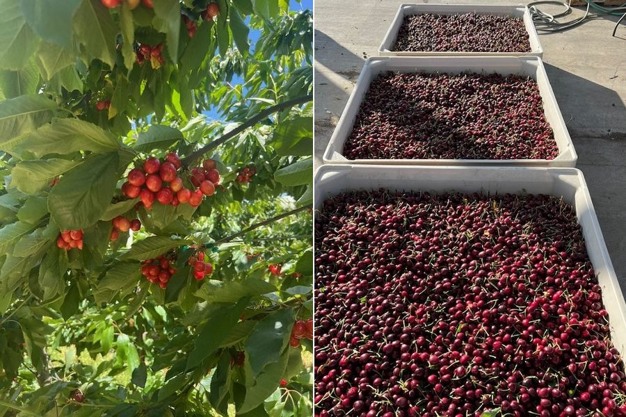Close to optimum growing conditions have resulted in Chile expecting a record cherry crop of 140 million boxes this upcoming season. While cherries are very weather dependent, everything is currently on track for a strong season.
Typically, 95 percent of Chile's cherries are exported to China with the remaining five percent making their way over to North America and Europe. In the past 15 years, Chile has primarily focused on developing the Chinese market as consumers there have been paying a premium for southern hemisphere cherries. "The Chinese highly value Chile's cherries and pay a very high price premium compared to other markets," says Don Roper with Honeybear Brands. "The growth in demand from China has incentivized Chilean growers to continue to plant more acreage. As a result, Chile is expected to produce 180 million boxes in a few more years."

Diversifying export markets
With production continuing to increase, it is important for Chile to diversify their exports. "The U.S. is one of the key target markets, which is a positive development as U.S. demand for high quality fresh cherries is strong," says Roper. This season is an opportunity for domestic U.S. retailers to offer a premium product during the holidays and through the winter months. "It's critically important for retailers to have the ability to offer a high-quality and well-managed program from Chile. If consumers have a positive experience with imported cherries, they will be the first to buy domestic cherries once the season in North America starts up. However, a poor experience will very likely have a counterproductive effect," Roper comments.
Co-loading
Harvest of Chilean cherries is about to start, and the first cherries will be flown into the U.S. by air, for arrival by mid-November. Once the country heads into the big production weeks, cherries will be shipped via ocean with the first vessels expected to arrive by mid-December. "We import cherries on both U.S. coasts with our primary repacking and warehouse locations in Philadelphia and Washington state," says Roper. "It is crucial for the fruit to arrive on both coasts as west coast arrivals allow us to co-loading cherries with apples for our customers west of the Mississippi." Co-loading enables Honeybear Marketing to execute "lowest landed cost" programs with retailers from both coasts, offering them the benefit of truckload rates while at the same time leveraging Honeybear's own freight division.
Will Chile have the capability to get 140 million 5 kg. boxes of cherries packed and shipped in in the short production time frame? "I believe they can," comments Roper. "In general, the country is profiled for it as the Chileans have continued to invest in production lines and warehousing to manage this very important crop. The Chinese are also making investments in Chile as they want access to cherries and more exports out of Chile. In addition, demand is real, and we are hopeful there will be no drastic changes in China's economic situation in the next few months, so they are able to spend $2.5 billion on cherries." All other stone fruits from Chile together generate around $500 million, showing the importance of cherries.


For more information:
Don Roper
Honeybear Brands
[email protected]
www.honeybearbrands.com
